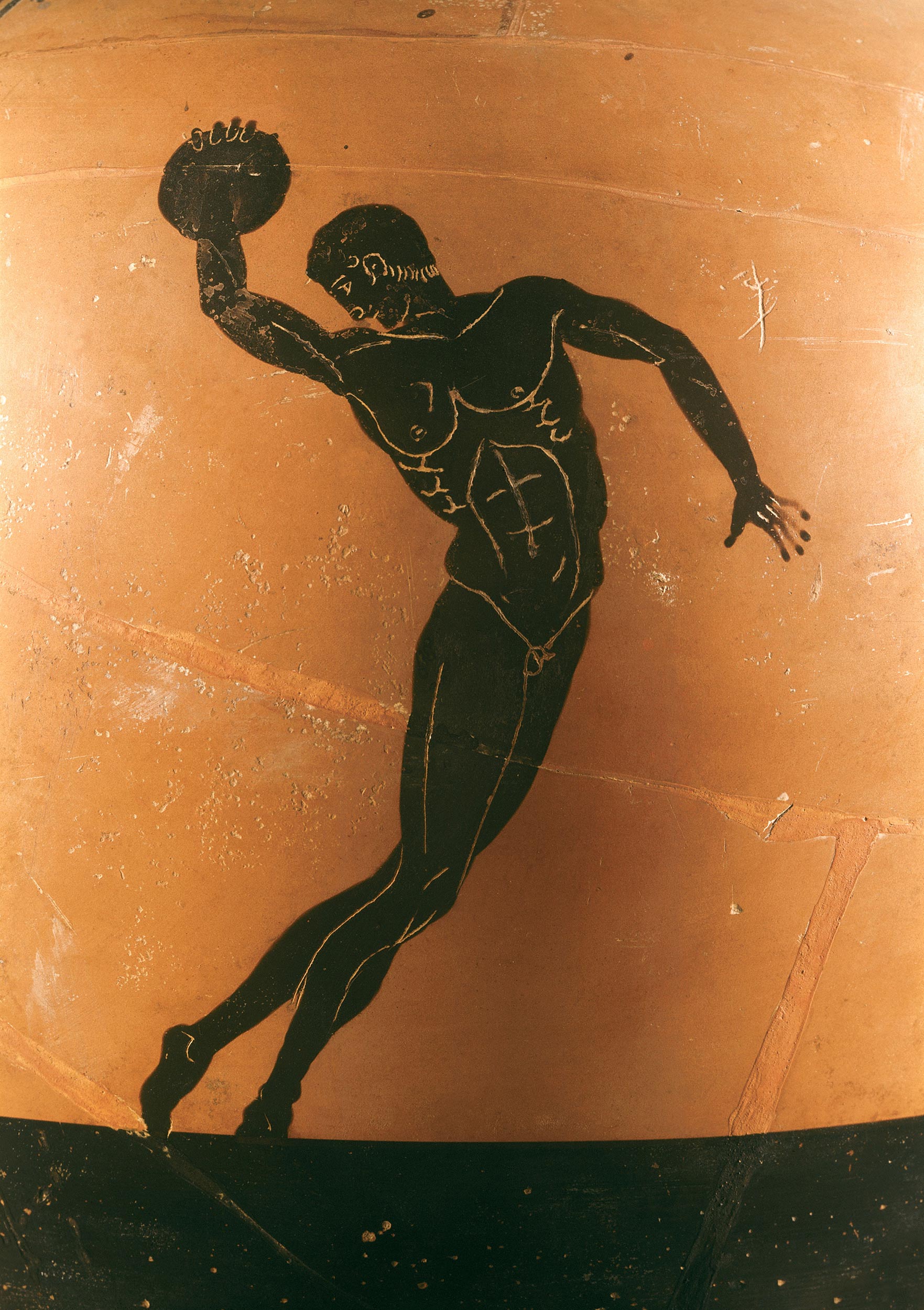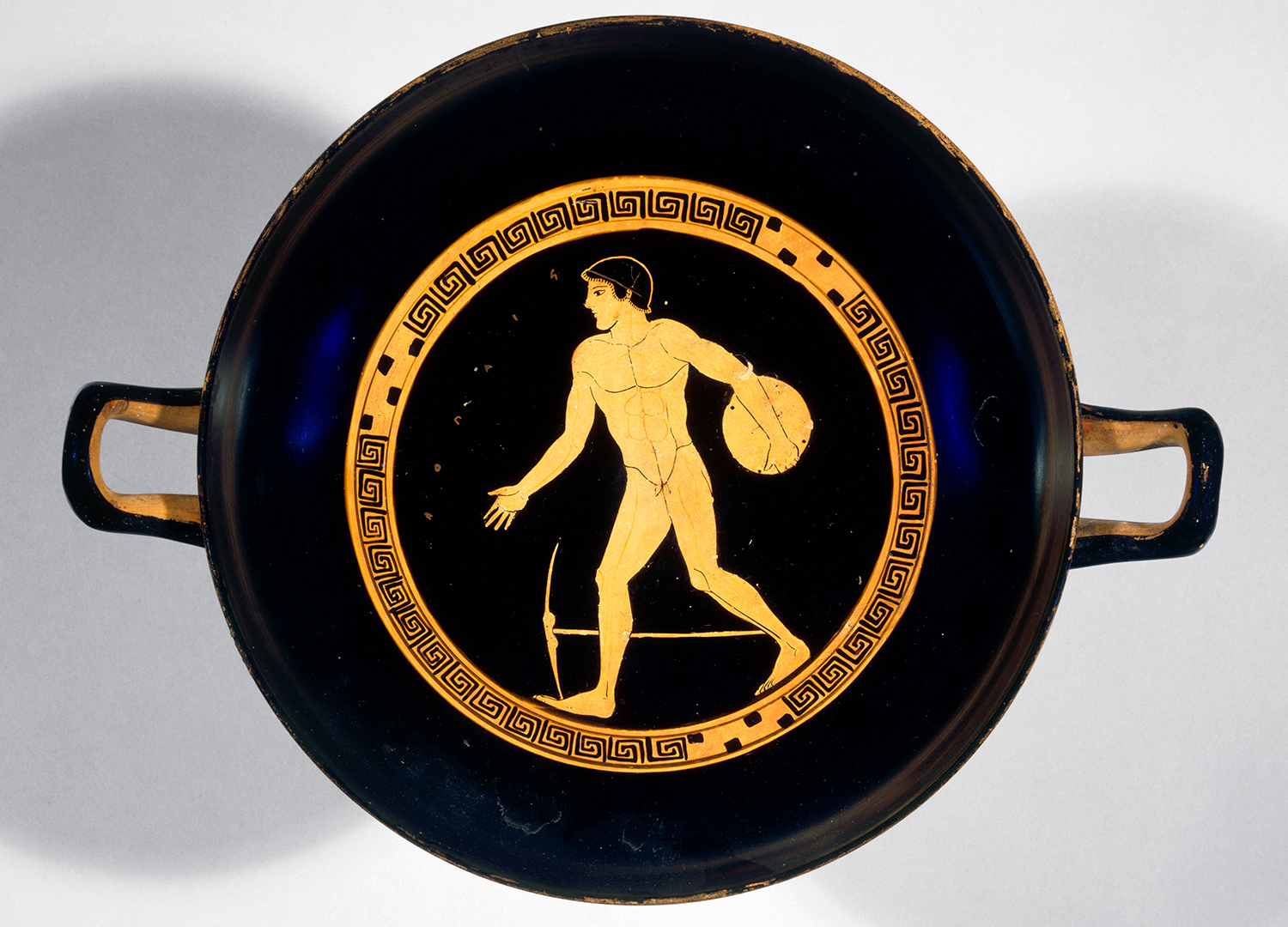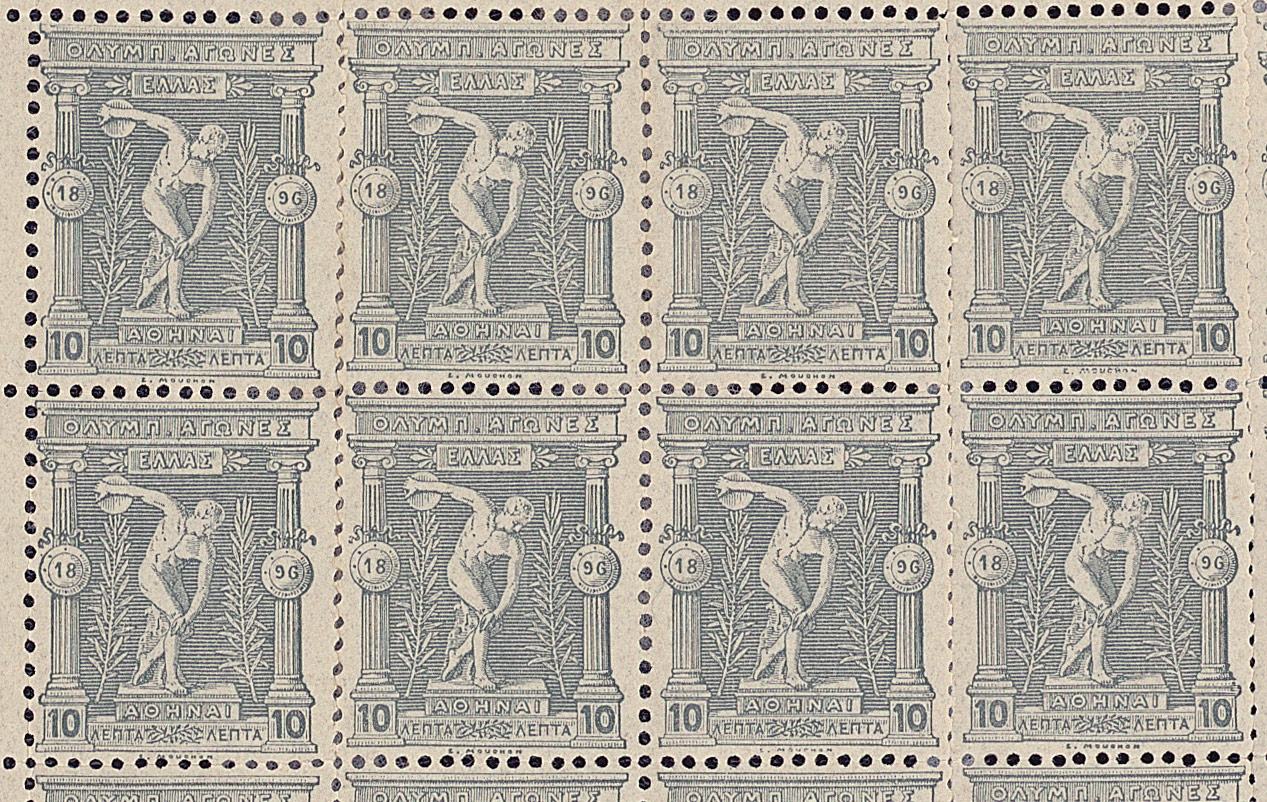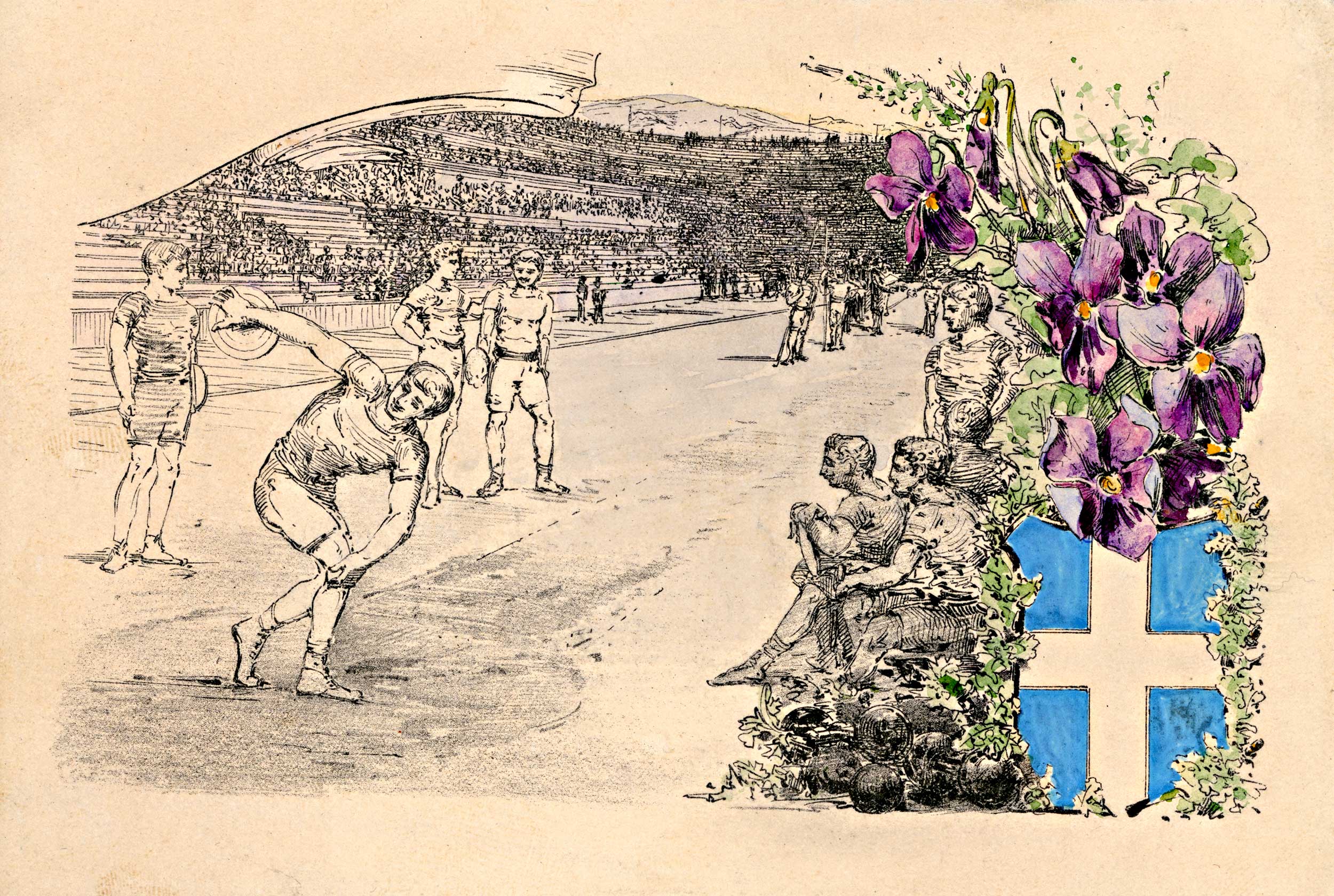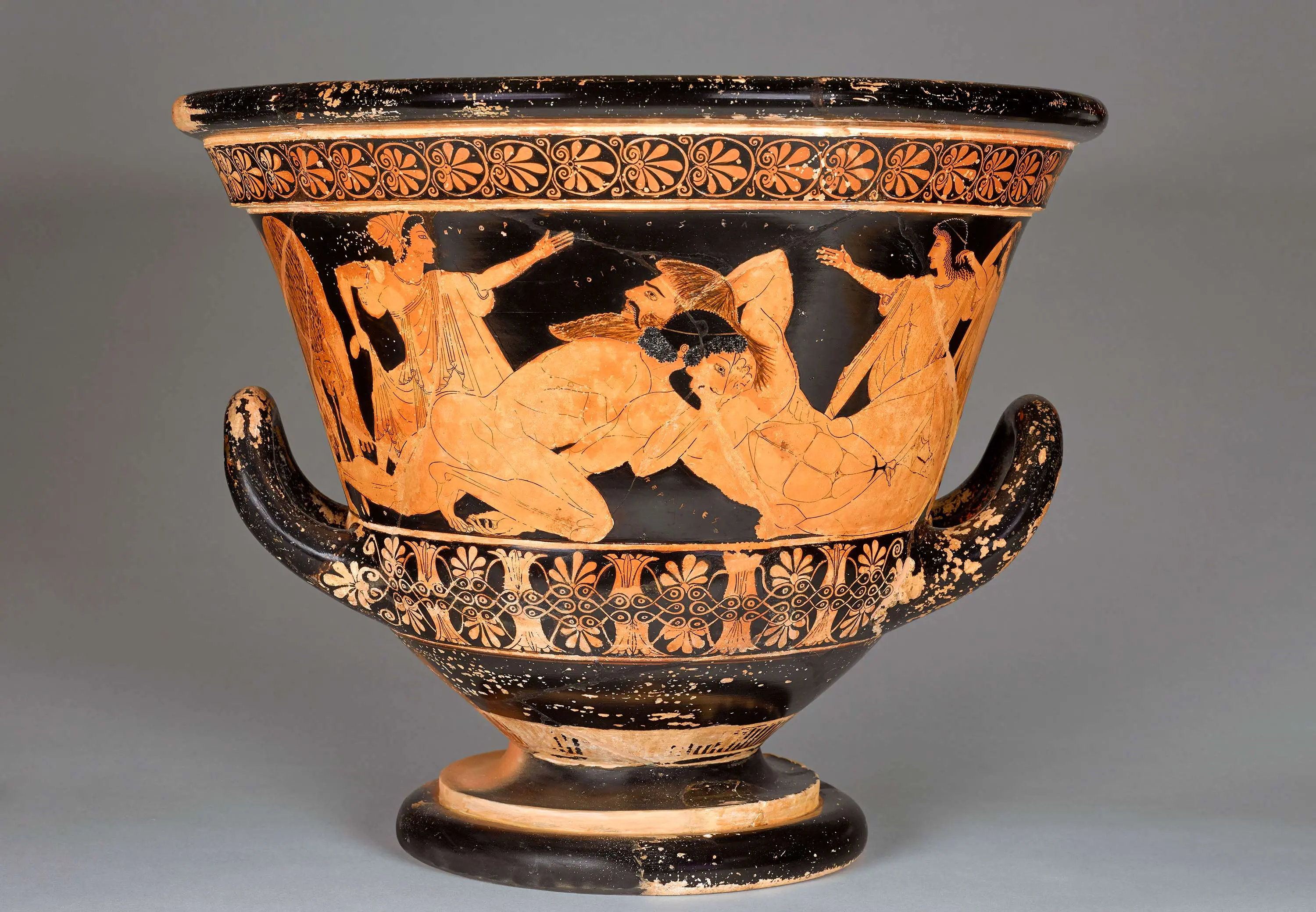
Olympism
24 April – 16 September 2024
Myron’s Discobolus, a Peerless Olympic SymbolAfter Myron,
Discobolus
Full cast of a copy after the Greek original, in bronze, by Myron (460–450 BC)
Late 19th century
Montpellier, Musée des Moulages
We know the Discobolus of the Greek sculptor Myron only by its copies, principally in marble. This famous statue, originally in bronze, depicts a discus thrower in action. It is rooted in the ‘Severe style’, characterised in 460–450 BC by great sobriety, an anatomically detailed representation of human bodies, and impassive expressions contrasting with the smiling faces of the Archaic period. In the mid-5th century BC, this peerless athlete was already among the works inaugurating classical Greek sculpture.
When the ‘Severe Style’ Became Classical
Weight firmly on his bent right leg, which supports him, while he lifts his other leg on tiptoe, the discus thrower makes the discus-swinging gesture so characteristic of this sport in antiquity. He is about to transition into a movement of explosive extension, combined with a rotation that will propel the discus. While the sculpture retains from the ‘Severe style’ a certain stylisation of the torso’s muscles and a two-dimensional composition that suggests high relief, the illusion of movement and the anatomic detail of the figure are already announcing the canons of beauty of Greek classicism.
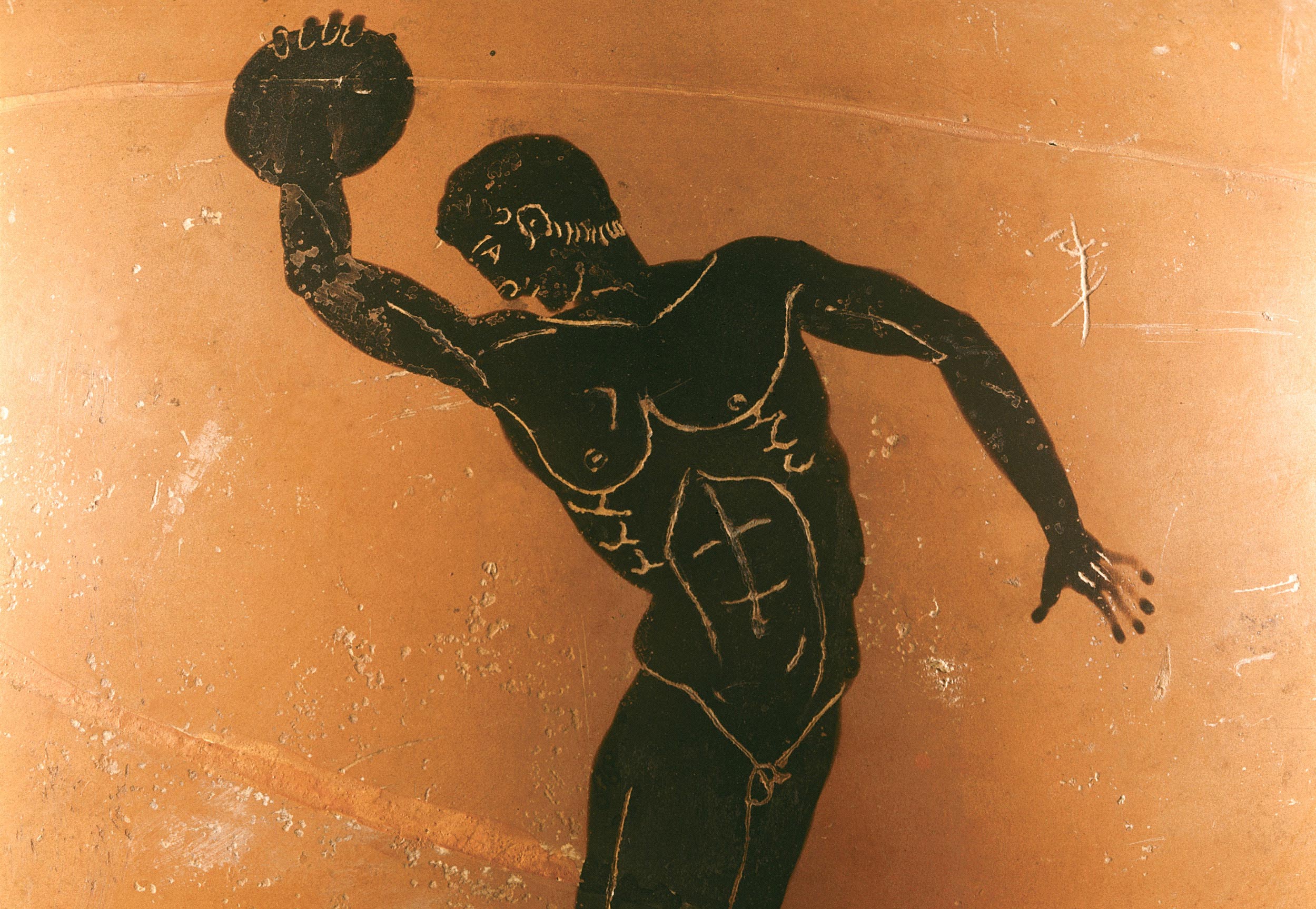
The Quintessence of Movement
Myron was celebrated in antiquity for his realism. Certainly the Discobolus shows a studied depiction of the human body unequalled in that era. But do not consider it a realistic artwork. Its composition is extremely formal, comprising four triangles and two circles. Apparently choosing the privileged moment when the discus thrower reverses his action, but in fact depicting several successive positions, the artist shows us an idealised athlete, thus revealing the quintessence of his art.

An Olympic Symbol Perverted by Nazism
From the beginning, this statue was one of the symbols of the Olympic Games. It appeared on two commemorative stamps from the first international Olympic Games (Athens, 1896) and on a commemorative postcard from the 1906 Mesolympics. However, for the 1936 Olympics, held in the Germany of the Third Reich, a propaganda film showed the Discobolus transforming into a living athlete, embodied by the German Erwin Huber. Nazi ideology appropriated a masterpiece of Greek sculpture to celebrate the supremacy of the Germanic race. Delighted by this, Hitler acquired the Lancellotti Discobolus in 1938, the most complete Roman copy of the Greek original, and presented it to the German people as an example of Aryan beauty. In 1948, the statue was finally returned to Italy. And on the poster for the London Olympics that same year, it was the British Museum’s copy that symbolised the Games, restoring Myron’s masterpiece to universality.

Did you know?
In antiquity, Myron’s most admired work was a depiction of a heifer in bronze. It was said to be so true to life that her own calf would be fooled.
Sélection d'œuvres

D’après Myron, Discobole. Moulage, tirage intégral. Fin du XIXe siècle. Montpellier, musée des Moulages
1 sur 8


